The **article** presents the intriguing hypothesis of a two-sided universe with matter and antimatter moving in opposite time directions from the Big Bang. It **explores** the concept of time reversal through the lens of quantum mechanics, using examples like electron-positron annihilation and the theoretical potential of black holes for backward time movement. **Symmetry**, especially CPT symmetry, is highlighted as a cornerstone of physics, suggesting a mirror universe moving backward in time might exist without violating physical laws. **Ideas** such as the “one electron universe” are presented, considering electrons as a single particle moving back and forth through time. However, the article **acknowledges** the importance of broken symmetry, particularly the matter-antimatter imbalance, for the universe’s existence.
–
Ads/sponsorships/reviews: contact me at.
[email protected].
–
👉👉👉 For Bitcoin donations, use the on-chain address below or the Lightning Network address provided below :
On-chain Bitcoin donations :
bc1qhss4ae60vn2s0a0khtmf4y90qfeju6tzq43thy.
Lightning Network LNURL Bitcoin for donations :
[email protected].
–
Referral link — passive income :
👉https://pawns.app/?r=QuickLearn.
–
Referral link — Mine Bitcoin Easily :
👉https://gomining.com/?ref=7Xo5l.
👉Discount Coupon: CORNER
Category: particle physics – Page 125
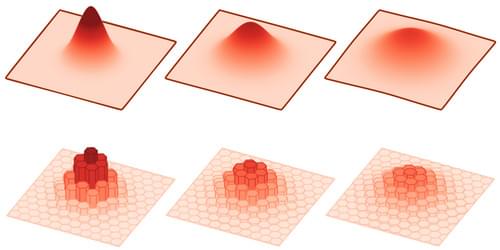
Imaging Quantum Waves
A new imaging technique can show the wave-like behavior of unconfined quantum particles.
A research team has shown that a method for imaging atoms held in a 2D array of optical traps can be used to reveal the wave-like behavior of the atoms when they are released into free space [1]. The team placed atoms in the traps, turned the traps off for a short time, and then turned them back on again. By making many measurements of the atoms’ locations after the traps were reactivated, the researchers could deduce the atoms’ wave-like behavior. The team plans to use this technique to simulate interacting systems of particles in quantum states that are not well understood.
Systems composed of many quantum particles, such as certain types of electronic or magnetic states of matter, can be investigated by simulating them using atoms distributed within arrays of optical traps, like eggs in a vast egg carton. One method for studying such atom arrays, called quantum gas microscopy, involves probing the positions and the quantum states of the atoms by using laser beams to make them fluoresce [2]. Joris Verstraten at the École Normale Supérieure in France and his colleagues have adapted the technique to observe collections of atoms allowed to move in free space, unconstrained by traps.
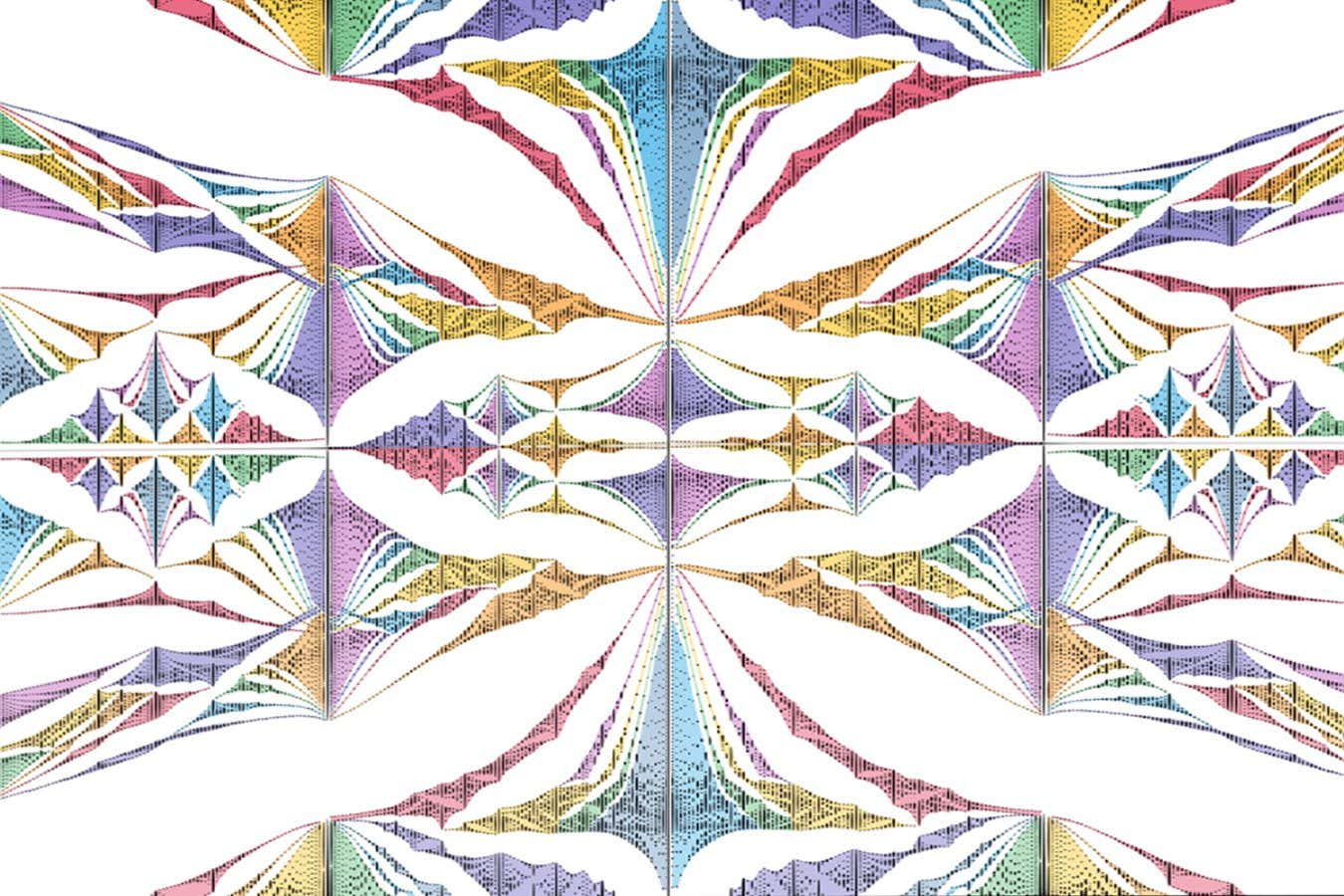
Physicists capture a strange fractal ‘butterfly’ for the first time
A fractal butterfly pattern produced by an unusual configuration of magnetic fields, first predicted almost 50 years ago, has been seen in detail for the first time in a twisted piece of graphene.
While a physics student in 1976, the computer scientist Douglas Hofstadter predicted that when certain two-dimensional crystals were placed in magnetic fields, their electrons’ energy levels should produce a strange pattern that looks the same no matter how far you zoom in, known as a fractal. At the time, however, Hofstadter calculated that the atoms of the crystal would have to be impossibly close together to produce such a pattern.
Image: Yazdani Lab, Princeton University
The electrons in a twisted piece of graphene show a strange repeating pattern first predicted in 1976, but never directly measured until now.
By Alex Wilkins
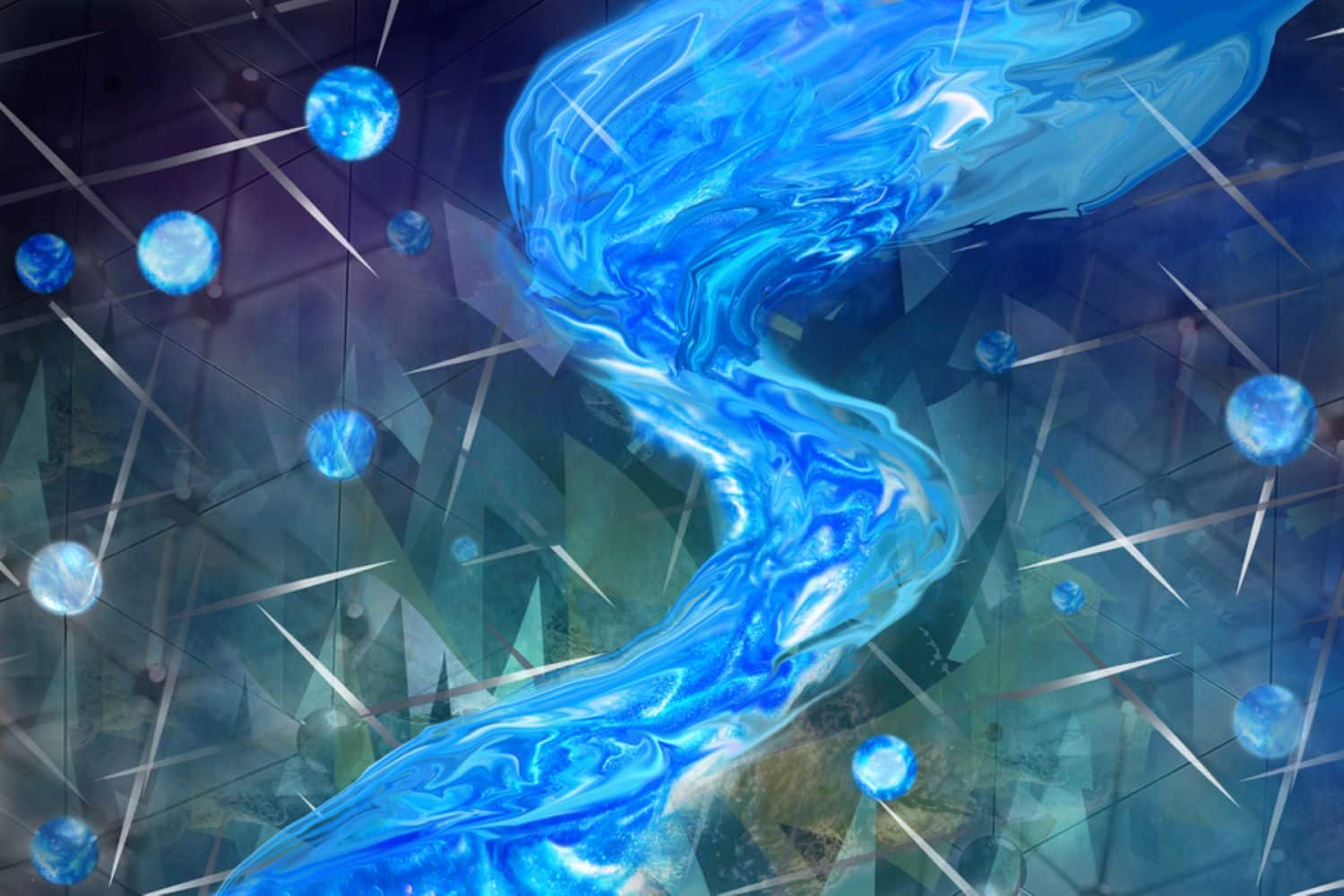
Unexpected crystals of electrons found in new ultrathin material
Long Ju, the lead researcher, describes the new material, rhombohedral pentalayer graphene, as a gold mine, with discoveries revealed at every step.
A novel class of quantum particles behaves in unexpected ways
Rhombohedral pentalayer graphene is a unique form of pencil lead. Pencil lead, or graphite, consists of graphene, a single layer of carbon atoms arranged in a hexagonal pattern. Rhombohedral pentalayer graphene has five layers of graphene stacked in a specific order.

New study sets tighter constraints on elusive sterile neutrinos
Neutrinos have always been difficult to study because their small mass and neutral charge make them especially elusive. Scientists have made a lot of headway in the field and can now detect three flavors, or oscillation states, of neutrinos. Other flavors continue to be elusive—though that could be because they don’t even exist.
Sterile neutrinos, a flavor that has been proposed to play a role in neutrino mass generation and causing the oscillations of other neutrinos, have been hinted at in previous experiments but never detected.
In a study published in Physical Review Letters, NOvA collaboration scientists did not find evidence of sterile neutrinos, but their work puts the tightest constraints on parameter space to date for where sterile neutrinos could be found.

Methane’s collision with gold surfaces reveals how quantum interference and symmetry dictate molecular behavior
The quantum rules shaping molecular collisions are now coming into focus, offering fresh insights for chemistry and materials science. When molecules collide with surfaces, a complex exchange of energy takes place between the molecule and the atoms composing the surface. But beneath this dizzying complexity, quantum mechanics, which celebrates its 100th anniversary this year, governs the process.
Quantum interference, in particular, plays a key role. It occurs when different pathways that a molecule can take overlap, resulting in specific patterns of interaction: some pathways amplify each other, while others cancel out entirely. This “dance of waves” affects how molecules exchange energy and momentum with surfaces, and ultimately how efficiently they react.
But until now, observing quantum interference in surface collisions with heavier molecules like methane (CH4) was nearly impossible because of the overwhelming number of pathways available for the system to take en route to the different collision outcomes. Many scientists have even wondered if all quantum effects would always “wash out” for these processes so that the simpler laws of classical physics, which apply to everyday, “macroscopic” objects, might be enough to describe them.
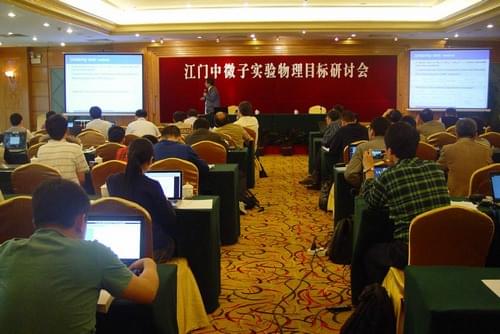
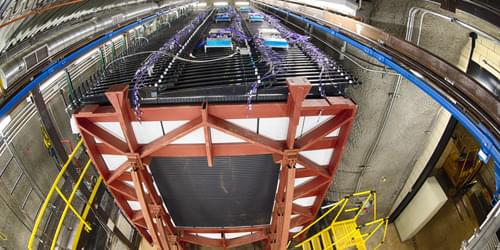

New Fundamental Magnetic Law Uncovered
A new formula that connects a material’s magnetic permeability to spin dynamics has been derived and tested 84 years after the debut of its electric counterpart.
If antiferromagnets, altermagnets, and other emerging quantum materials are to be harnessed for spintronic devices, physicists will need to better understand the spin dynamics in these materials. One possible path forward is to exploit the duality between electric and magnetic dynamics expressed by Maxwell’s equations. From this duality, one could naively expect mirror-like similarities in the behavior of electric and magnetic dipoles. However, a profound difference between the quantized lattice electric excitations—such as phonons—and spin excitations—such as paramagnetic and antiferromagnetic spin resonances and magnons—has now been unveiled in terms of their corresponding contributions to the static electric susceptibility and magnetic permeability. Viktor Rindert of Lund University in Sweden and his collaborators have derived and verified a formula that relates a material’s magnetic permeability to the frequencies of magnetic spin resonances [1].
World’s smallest shooting video game uses nanoscale technology
A research team led by Professor Takayuki Hoshino of Nagoya University’s Graduate School of Engineering in Japan has demonstrated the world’s smallest shooting game by manipulating nanoparticles in real time, resulting in a game that is played with particles approximately 1 billionth of a meter in size.
This research is a significant step toward developing a computer interface system that seamlessly integrates virtual objects with real nanomaterials. They published their study in the Japanese Journal of Applied Physics.
The game demonstrates what the researchers call “nano-mixed reality (MR),” which integrates digital technology with the physical nanoworld in real time using high-speed electron beams. These beams generate dynamic patterns of electric fields and optical images on a display surface, allowing researchers to control the force field acting on the nanoparticles in real time to move and manipulate them.